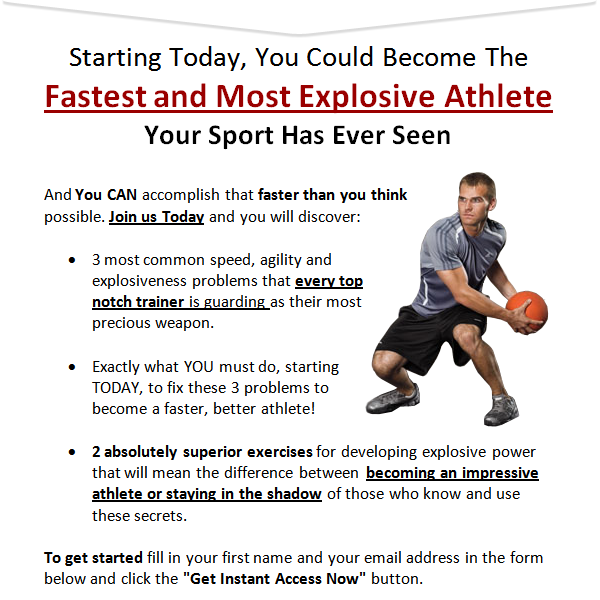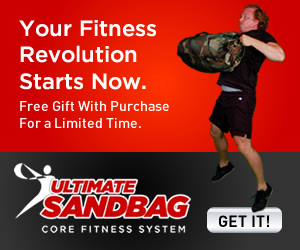Like with any training program, progression is the key so it is really important that you or the athletes you train perform exercises that are challenging but not difficult. Difficult exercises are ones that you simply cannot perform with good form due to a lack of either mobility or stability or in many cases a combination of both. If an athlete shows any dysfunction it is important that we correct this before introducing higher level strength and power work into their program. Adding strength to dysfunction is only putting the athlete at greater risk of injury somewhere down the track.
Once you have sufficient mobility and stability and can show symmetry in a functional movement screen and assessment then you can and should start to develop the strength base of the athlete. This allows for physical development to occur safely and effectively. From a solid strength base we can then start to develop speed and power. Our goal is to improve performance while reducing the risk of injury.
With all my new clients I start with a functional movement assessment to figure out if the athlete has any asymmetries. If I find any weak points, I will plan and integrate corrective exercise into their program to improve their mobility, static stability and then dynamic stability. Mobility is always addressed first because adequate stability cannot be present with reduced mobility.
Only once movement quality is good enough I start implementing strength training under increasing loads (progression). After sufficient strength and core stability has been achieved and only then do I start introducing higher level plyometrics and rotational power movements into the athletes program. Remember they get rotational power and plyometric work in their skills practice and matches so careful consideration needs to be placed on when and how you implement this stuff into their program.
Exercise Selection:
If you are training an athlete or group of players it is crucial that you choose exercises that will allow you to evaluate their movement quality with every repetition that they do. You need to also take into consideration what training age you or your athlete is (i.e. how long they have been in the sport and how much strength and conditioning they have done previously)
There are a few more things to consider. Where exactly are you in your calendar? Are you starting your pre season preparation or are you in season? Obviously in season and off season will have an effect on how much work you do off the field. If we are talking about youth athletes, they invariably play other sports so be mindful of the amount of work they are doing there too! Programming all of this stuff is the tricky part as there is NEVER a one size fits ALL program
Below I have included a basic program design outline for cricket players. This is also applicable to other ground based rotational sports. How this is implemented needs careful consideration. Remember there are skills sessions (i.e. batting, bowling and fielding specific) so timing of when you do your work is critical to injury prevention and enhancing your performance in each training session. This takes careful planning and often readjusting. Remember no program is perfect, no athlete is perfect, and no coach is perfect. Do the work, evaluate what you have done and always look to improve the way you coach!
Workout Design
Try to do your work in this order
- Soft Tissue Work- Foam Rolling and other Self Myofascial release techniques
- Static Stretch
- Movement Preparation - Mobility and Activation, Dynamic Warm Up
- Speed - Linear, Lateral and Multi-directional speed
- Plyometrics and Power Training
- Strength Training
- Conditioning
- Recovery- Nutrition, Soft Tissue work etc.
Soft Tissue Work
Self Myofascial Release through foam rolling and other techniques using tennis balls, cricket balls and medicine balls helps decrease tissue density in your myofascia (basically eases tension in and around muscle fibre) and is especially important as the training program progresses and the workload increases. This is a great way to improve mobility. If you can afford hands on massage therapy then definitely give that a go. If not grab yourself a good foam roller. They are well worth the investment!
The Grid Foam Roller
Stretch Series
- Band Lat Stretch
- SCM stretch
- Posterior Capsule Stretch
- Elbow and Wrist Stretch
- Split-Stance Kneeling Adductor Stretch – Hips Flexed and Extended
- Levator Scapulae Stretch
- 3-D Hamstring Stretch
- Box Hip Flexor Stretch
- Quad Hip Flexor, Abductor
- Exercise Ball Internal Rotation Stretch
- Sumo Squat Stretch
- Hip Rotator Stretch
Download the Stretch Series Here
Mobility & Activation (ankles, hips, shoulders and thoracic spine)
- 3-D Ankle Mobility
- 4 part squat
- Leg Swings
- Lateral Lunge Crossover Combo
- Quadruped T-spine Rotations (Placing a foam roller on the athlete’s lower back ensures the development of thoracic mobility with active lumbar stability. You can also prevent the lumbar spine from rotating by sitting back into flexion (bum back into heels), or dropping one leg back into lateral lumbar flexion.)
- Quadruped Limb Raise Progression (The Grid Foam Roller needs to remain still as the athlete works on stabilising.)
- 3 Way Single Leg Dead lift Reach (SLDLR)
- Reverse Lunge with Rotation
- Cook Hip Lift with Tennis Ball
- Reach Roll and Lift against wall
- Scapular Wall/Floor Slides
- Band Pull a Part Series
- W - Activation with Band
- Push up Protraction
- Leg Lowering
- Lying Hip Flexion
- Side-lying Lateral Rotation/Abduction (glute and hip rotator activation with a mini-band.)
- Mini Band Linear in and outs
- Push Ups
Core and Shoulder Stabilisation
- Chop and Lift
- Plank progression
- Roll out Progression (stability ball rollout, ab wheel rollout, trx)
- Dynamic Shoulder Stability Exercises - Stability ball holds, Partner Perturbations
Integrated Strength Preparation Exercises
The aim is to get the athlete ready for heavier resistance training by performing body weight exercises or exercises with very light resistance. A huge emphasis is placed on breathing technique and learning the correct form for each movement.
Strength Preparation Exercises
- Lunges- lateral crossover lunge combo
- Rotational cross behind lunge combo
- Lunge circuit with medicine ball
- Elbow to instep
- How to do a push up correctly
- Patterning the Dead lift – Hip Hinge Progression
- Rear foot elevated split squats (RFESS’s)
Strength Training Progression
- Rear Foot elevated split squats under increasing loads
- Single leg squat progression
- Dead lift variations under increasing loads
- Horizontal Rowing Variations (using TRX, kettle bells, dumbbells, resistance bands and a T-bar)
- Push - Push up progression (push up body weight- loaded push up- dumb bell bench press)
- Various pull up variations (vertical pulls)
- Turkish Get Up Progression
Wrist and Forearm Strength
We do not have to spend too much time on developing grip, wrist and forearm strength as these benefits are transferred through our thick bar training using Fat Gripz, pull up variations with towels. There are a few extra little things that we can do though to really nail our forearms. I like the captains of crushers and the grip stick. We can also do wrist rolls with a kettle bell, heavy resistance band and barbell.
Rotator Cuff Work
- Face pulls with band
- Face pulls with external rotation
- Band internal rotations
- Side lying external rotations
Advanced Core Exercises
- Single arm pushes
- Extreme core trainer
- Band press on one foot
- Standing Pallof Press on TRX
- Side bridge rows
- Slide board roll out double and then single arm (way more advanced)
Lower Body Power
- Plyometric Progression (linear, lateral and multidirectional explosive movements)
- Kettle bell swings
Rotational Power
- Medicine Ball Throws (Cricket specific medicine ball progression designed specifically to develop kinetic awareness from the feet up through the legs, hips, torso and the upper body.)
- Rotational Push-Pull with the extreme core trainer
- Resistance band explosive chops
- Cable chops and several pull variations







